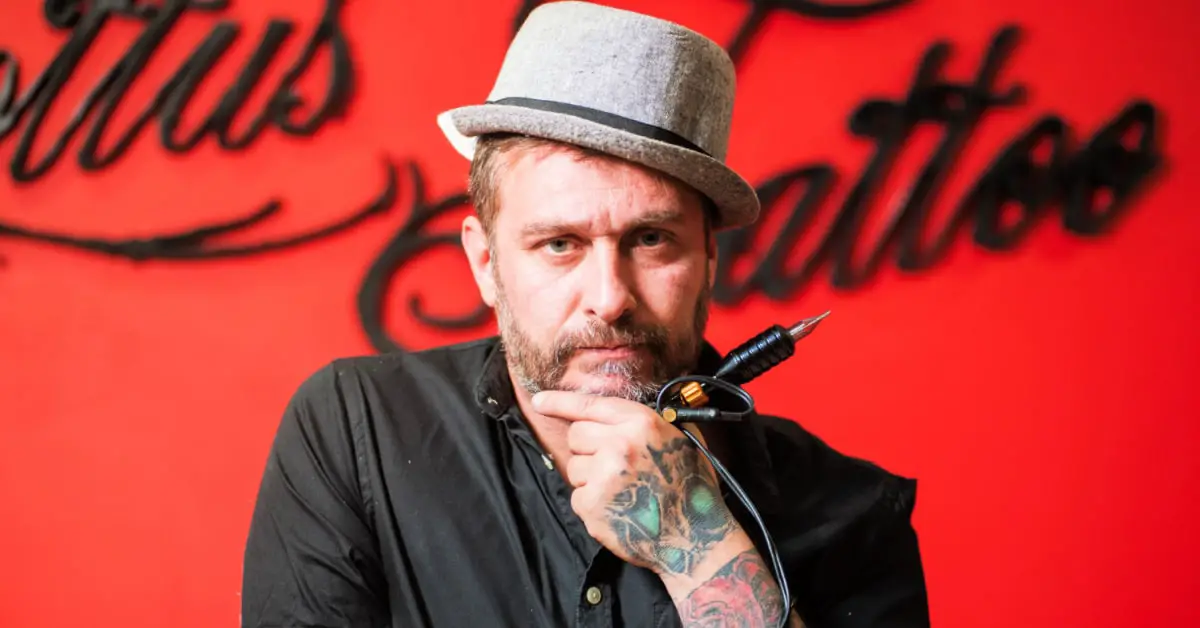So, who says science and art don’t mix? How do tattoos work? Tattoos are art that uses science for execution. It is a refined process that encompasses the skill of the artist to transfer art into the skin. The science of tattooing is what makes it permanent.
Using skin as a canvas is far different from drawing art on a piece of paper. The technique needs extreme precision. While on a piece of paper, you can erase mistakes. Tattooing, on the other hand, you can’t.
Every blot of ink that reaches the skin dermis becomes permanent.
Before digging deeper into how tattoos work, understanding the architecture of the skin will give you a better insight.
The Ink In The Skin
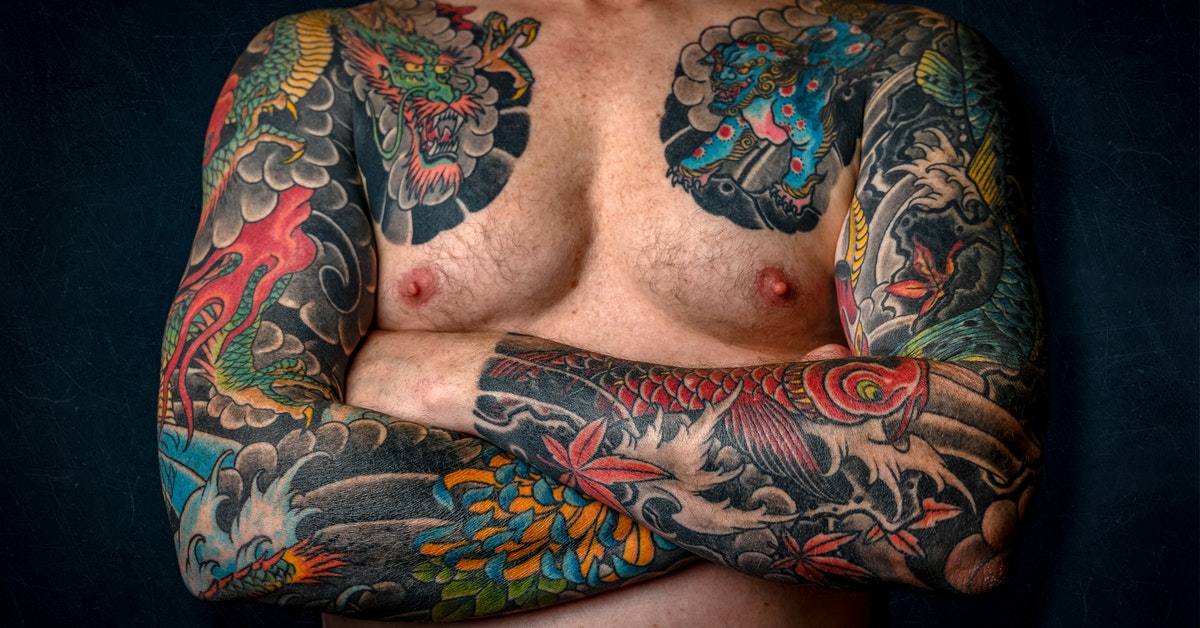
The application of tattoos uses a mechanized needle to inject ink into the second layer of the skin. Other techniques, such as hand-poked tattoos, use any sharp object to puncture the skin to embed the ink manually. Accurately reaching the second layer when injecting the ink is crucial.
Remember, the skin has layers & each layer has a specific function.
The Anatomy of the Skin
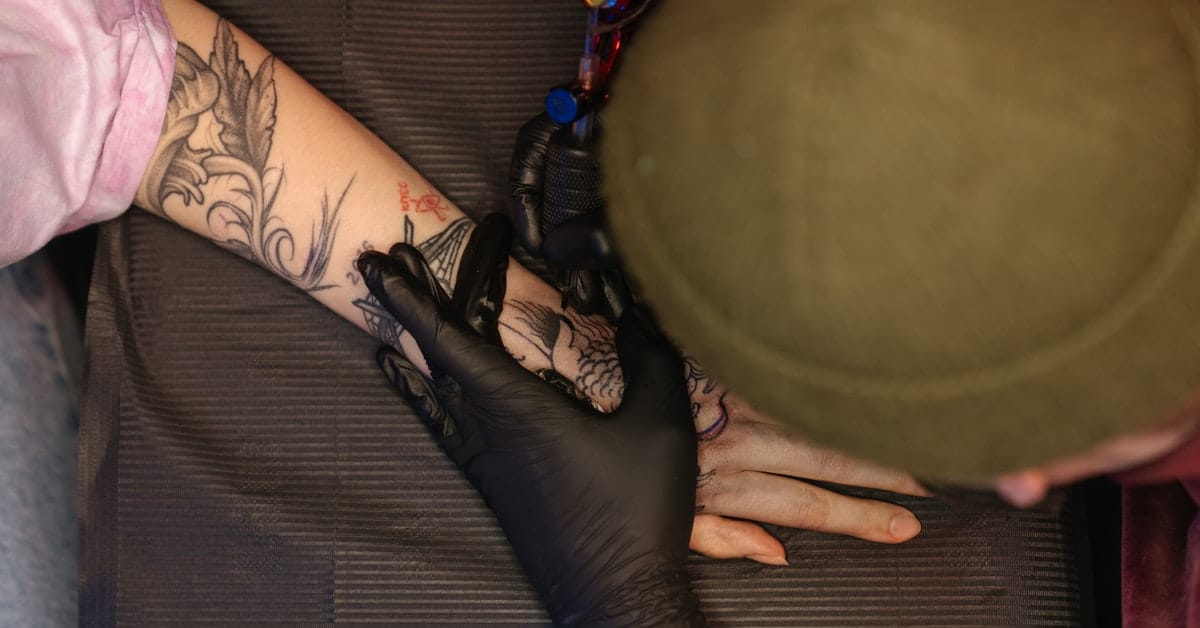
Epidermis (Top Layer)
The epidermis acts as a protective layer. It is responsible for protecting the body from harmful elements. It provides skin color because of its melanin content. And from time to time, the epidermis replenishes.
Dermis (Middle Layer)
The dermis is one to grow hair. It contains collagen and elastin that makes the skin strong yet resilient at the same time. Moreover, the dermis layer has nerve receptors. These receptors tell you whether an object is hot, cold, textured, etc.
Hypodermis (Fatty/Bottom Layer)
The hypodermis serves as a cushion for the bones. It also connects the skin to the bones and muscles. The hypodermis helps regulate body temperatures. The blood vessels found in the hypodermis are what connect the skin to the rest of the body.
The skin is the largest organ, It is a very important part of the body. Injecting the skin with ink can be quite alarming. Knowing that it is responsible for our sense of touch. Thus, tattoo artists use science to perfect their craft. The machine used for tattooing assists the artist in accurately hitting the dermis.
How Do Tattoo Machines Work?
Much like any other machine, a specific kind of tattoo machine has a specific function. Mainly, tattoo machines are what drive the needle to create skin art. Some are made for creating fine lines. While other machines are made for shading and filling.
Types of Tattoo Machines
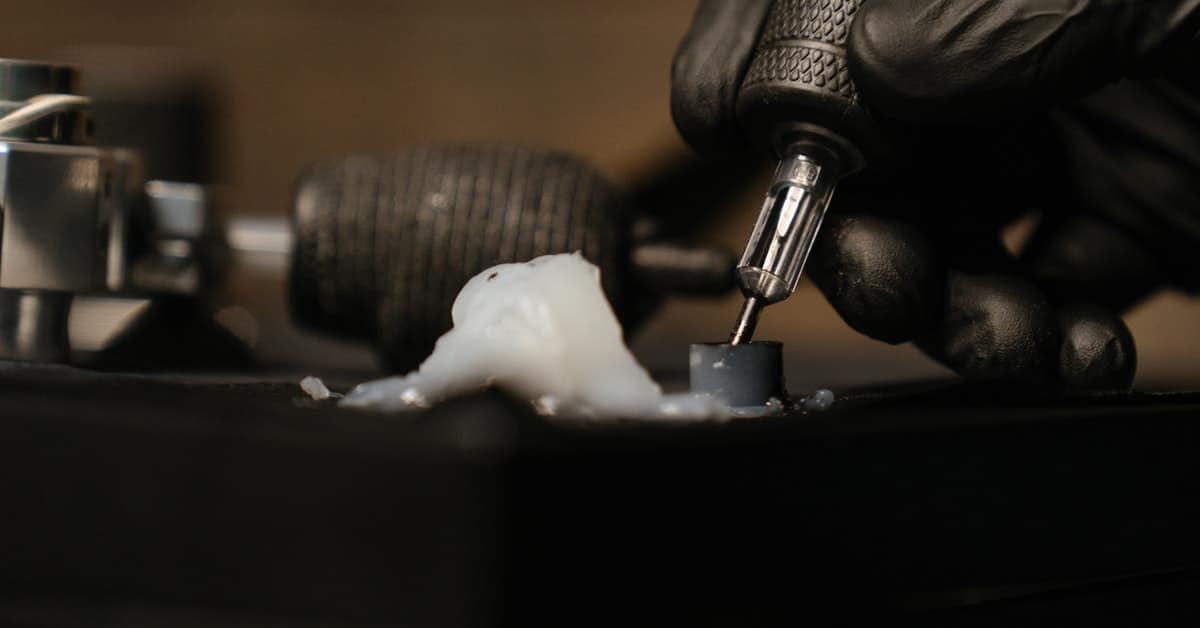
Coil Mechanism
A tattoo machine that uses electromagnetically charged coils. Charged coils pull and release the bar that holds the needle.
Rotary Machines
The rotary machine uses an electric motor that rotates, pushes, and pulls needles. It motions in and out of the skin while leaving small amounts of ink on the dermis. The needle is the one to carry the ink to be injected into the skin.
Types of Tattoo Needles
There are three main types of needles:
- Liners
- Shaders
- Magnums
The Process of Tattooing
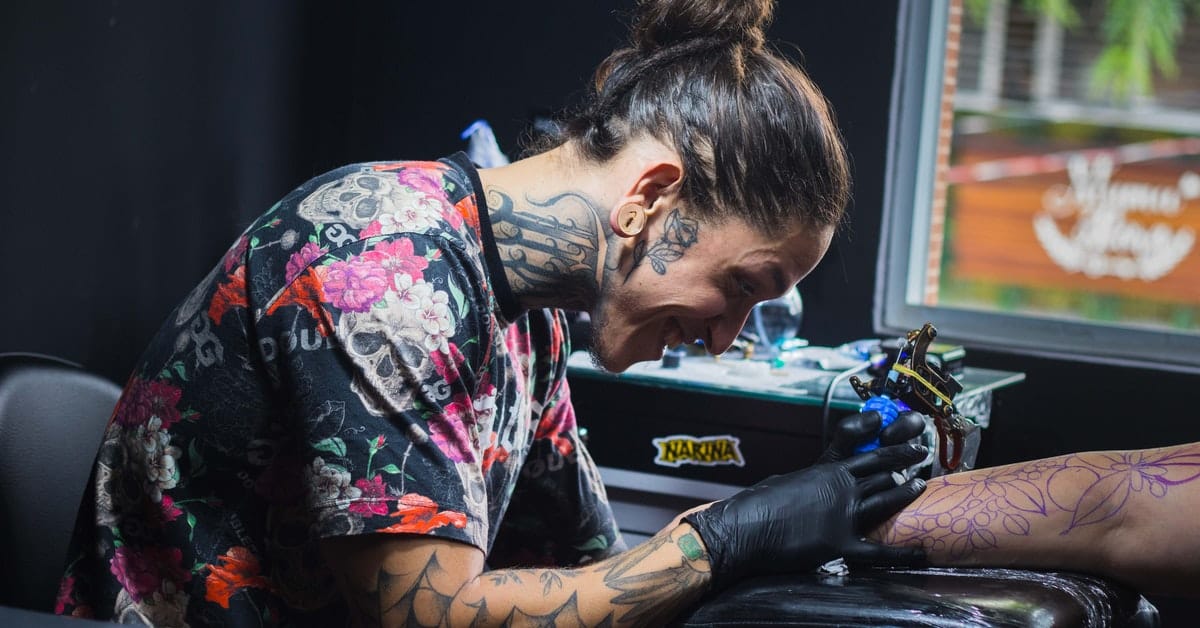
The first thing the artist will do is to transfer the design to some stencil paper. Then, the stencil will be placed onto the desired body part. Once the design has been transferred to the skin surface, the artist will load the tube holding the needle.
After, the first touch of the needle will sting. It will puncture the skin 50 to 3000 times per minute. The ink will then be deposited into the dermis layer. The artist will precisely hit the depth of 1mm-2mm, with the depth typically depends on the body part.
Essentially, tattooing is a process that creates an open wound. It is typical for the body responds to the movement of the needle. Hence, you will feel pain and tingling sensations.
The ink is intentionally trapped in the dermis. Since ink particles are larger than the skin cells, it is hard for the dermis layer to disperse them.
Hence, tattoos are permanent.
How Does the Tattooing Process Damage the Skin?
Every time the needle hits the dermis, it causes a wound. It’ll be then the immune system is being alerted. It will begin the inflammatory process. Since the epidermis, dermis, and hypodermis are being damaged, the layers will exhibit a mushy facade.
Initially, the ink disperses in the topmost layer of the skin. However, it aggregates in the second layer within one to two weeks. Like any other wound, the body’s first response is to stop the bleeding. When the bleeding stops, the tissue will start to swell.
The automatic response of the body is mostly coming from the neutrophils. Neutrophils make up 70% of our white blood cells. Later on, the phagocytic cells will swallow the ink debris. The phagocytic cell is the protector against harmful substances the body absorbs.
If no allergic reactions or infection occurs, the tissue will slowly get regenerated with the help of fibroblasts. Then, new tissue will be formed. Later on, as the tissue matures, it will turn into fibrous tissue. In other words, an old scar. Hence, the ink becomes permanently embedded into the skin.
The ink also goes through different stages in the dermis. This process is essential in keeping it in place for a long time. Tattoo ink dispersal is a natural process happening in the body.
Stages of Tattoo Ink Dispersal
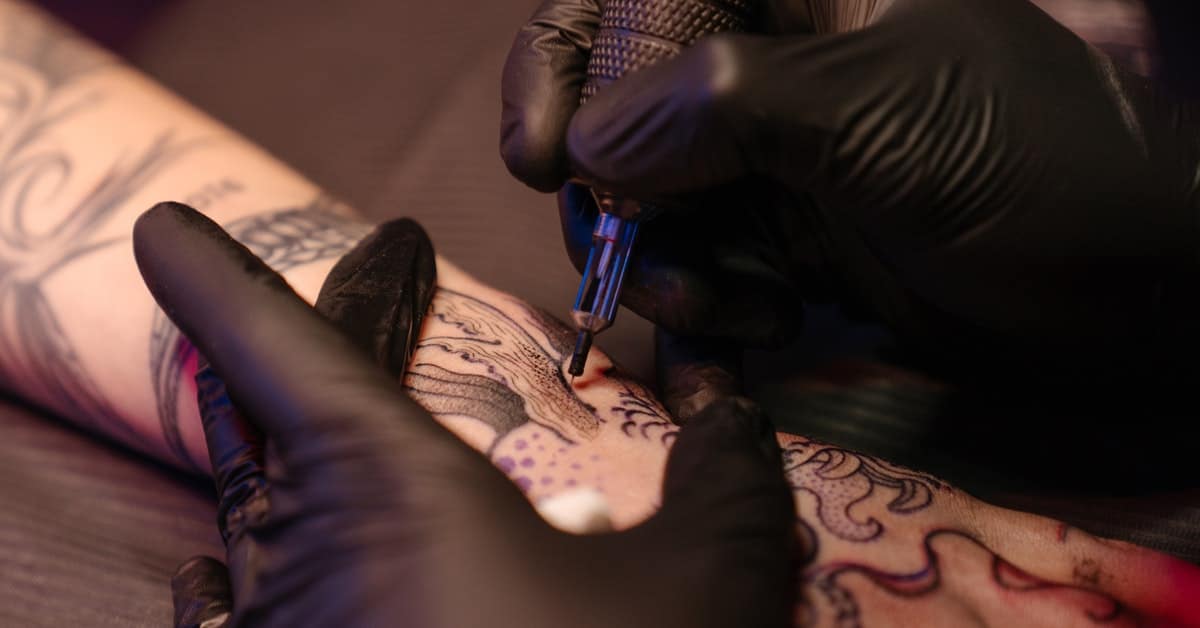
First Month
The basement membrane of the epidermis will reform. It is where the ink is injected during the tattoo process. The cells that contain tattoo ink will be concentrated between the dermis and the epidermis. Typically, it is found just beneath the layer where collagen lies. During the process of ink concentration, debris of ink is still being eliminated.
Second and Third Month
At this stage, the epidermis will be fully regenerated and reformed. Once the epidermis is reformed, loss of any more ink will be prevented. At this point, the ink is now present in the dermal fibroblasts. The ink found in fibroblasts is located underneath the layer of fibrous tissue.
A network of connective tissue will surround and trap the fibroblast with tattoo ink. These fibroblasts are responsible for keeping the ink injected into the skin for a long period of time.
Why Does Tattoo Ink Fade Over Time?
It is still a continuous debate whether or not ink particles are only found in the fibroblast. While some assume that the ink remains as extracellular aggregations. The lifespan of the ink in the fibroblast is also not known. Thus, some tattoos fade in a short period of time.
On the other hand, it is presumed that ink particles are moved deeper into the dermis layer. In this case, the tattoo appears blurry and bluish.
Understanding the Risks of Tattooing
It is not uncommon for some people to have allergic reactions to tattoo ink. The idea of breaching the skin just to draw art can sometimes lead to skin irritation and infections.
Not only on the epidermis layer but also on the dermis and the hypodermis. Thus, some people experience skin complications after getting a tattoo.
Can there be side effects or skin complications from getting a tattoo? Sure, read on.
Tattoo Skin Complications
Allergic Reactions
This is perhaps the most common skin complication people experience. Just like how your body reacts to food allergies, being allergic to tattoo dyes also triggers negative body reactions. Allergic reactions to red, green, yellow, and blue dyes from tattoo inks often occur years after having the tattoo.
Skin Infections
Skin infections happen right after getting the tattoo. Oftentimes, it is not caused by allergic reactions. Rather, due to unsterilized tattoo needles or cheap tattoo ink.
Keloids
Keloids are a common occurrence after an ope wound heals. Since the tattoo is considered an open wound, it is likely for some to have bumps around the tattoo.
Bloodborne Diseases
A bloodborne disease is a serious case. It is caused by tattoo equipment being contaminated with infected blood. Bloodborne diseases come in the form of tetanus, hepatitis B, and hepatitis C. Hence, it is very important to ensure that the needle is new.
How Do Tattoos Work? – Conclusion
Tattoos are the technique of drawing art on the skin that follows strict safety protocols. Many professional tattoo artists undergo training to learn the right way of making tattoos. On the other hand, many great artists teach themself.
Tattoos are both a science and art. Without science, safety will be compromised. And without art, tattoos will not even exist, tattooing is a highly creative process. It is one way for someone to showcase their creativity using the skin as a canvas.
Every artist has different styles. Some are great at creating bold and brash designs. While some tattoo artists create delicate designs that exhibit a soft and exquisite appeal.
Regardless of how different these styles are, all tattoo artists follow the same techniques once they start drawing on the skin.
Happy Tattooing!
